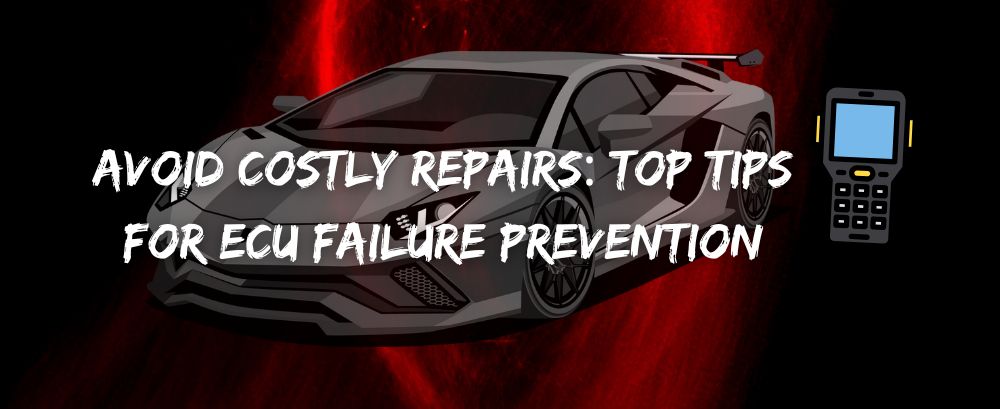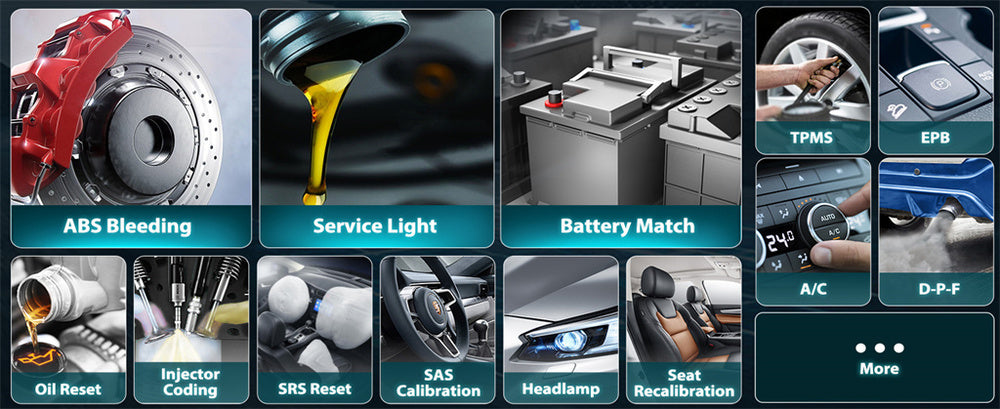The Engine Control Unit (ECU) is often referred to as the brain of your vehicle. It plays a crucial role in managing engine performance, fuel efficiency, and overall vehicle operation.
However, ECU failures can lead to significant repair costs and inconvenient breakdowns. Understanding the warning signs of ECU issues and implementing effective preventative measures can save you both time and money.
We’ll explore the common causes of ECU failures and provide essential tips to help you keep your vehicle running smoothly.
Understanding ECU Failures: Common Causes and Symptoms

The ECU processes data from various sensors to optimize engine performance. However, several factors can lead to ECU failures:
- Electrical Issues: Faulty wiring or poor connections can disrupt the power supply to the ECU, leading to malfunctions.
- Overheating: High temperatures can damage ECU components, often due to a malfunctioning cooling system or prolonged exposure to extreme conditions.
- Moisture Damage: Water intrusion can occur from damaged seals or improper installation, resulting in short circuits and corrosion.
- Software Glitches: Outdated or corrupt software can cause erratic ECU behavior, affecting overall vehicle performance.
- Mechanical Stress: Excessive vibrations and impacts from rough driving conditions can physically damage the ECU.
Recognizing these symptoms early—such as poor fuel efficiency, engine stalling, or warning lights on the dashboard—can help you address issues before they escalate.
Tip 1: Regular Battery Checks to Prevent ECU Damage
The ECU relies on a stable power supply from the vehicle’s battery. Regularly checking the battery's health is vital. A weak or failing battery can cause voltage fluctuations, leading to ECU damage over time.
How to Check Your Battery:
- Visual Inspection: Look for corrosion on terminals and ensure connections are tight.
- Voltage Test: Use a multimeter to measure the voltage. A healthy battery should read around 12.6 volts or higher.
- Professional Testing: If you suspect issues, have a professional test your battery and charging system.
Tip 2: Maintain a Healthy Cooling System
The ECU can be severely affected by overheating, which can damage its internal components. Ensuring your vehicle’s cooling system is functioning properly is essential for ECU longevity.
Key Maintenance Steps:
- Regular Coolant Checks: Inspect coolant levels frequently and top up as necessary.
- Check for Leaks: Look for signs of leaks in hoses, the radiator, and the water pump.
- Thermostat Functionality: Ensure that the thermostat opens and closes at the correct temperatures.
By maintaining a stable operating temperature, you reduce the risk of thermal stress on the ECU.
Tip 3: Use Quality Fuel for Optimal ECU Performance
The quality of fuel used can significantly impact the performance of the ECU. Low-quality fuel may contain contaminants that can clog fuel injectors and disrupt engine performance, leading to ECU strain.
Recommendations:
- Purchase from Reputable Stations: Choose fuel brands known for high-quality standards.
- Consider Additives: Use fuel additives periodically to clean the fuel system and improve combustion efficiency.
Using quality fuel not only enhances engine performance but also helps the ECU operate within its optimal parameters.
Tip 4: Keep Software Updated for Enhanced ECU Functionality
Just like computers, ECUs require software updates to function efficiently. Manufacturers often release updates that improve performance, fix bugs, and enhance security.
Steps to Update ECU Software:
- Check with Manufacturer: Consult your vehicle’s manual or manufacturer’s website for available updates.
- Professional Assistance: Consider having a qualified technician perform the update to ensure proper installation.
Keeping the ECU software up-to-date can prevent glitches and improve overall vehicle responsiveness.
Tip 5: Avoid Overloading Your Vehicle
Excessive weight can put significant stress on your vehicle’s components, including the ECU. Overloading can lead to overheating and premature wear.
Tips for Load Management:
- Know Your Limits: Familiarize yourself with your vehicle’s weight capacity, including passengers and cargo.
- Regularly Remove Unnecessary Items: Clean out your vehicle to reduce weight, especially if carrying heavy items is not necessary.
By avoiding overloading, you can prevent unnecessary stress on your ECU and other vital systems.
Signs Your ECU Might Be Failing: What to Watch For
Being aware of the signs of potential ECU failure is crucial for timely intervention. Common indicators that your ECU might be experiencing issues include the illumination of the "Check Engine" light, which could suggest various underlying problems.
A noticeable drop in fuel economy can also indicate ECU malfunctions, as an inefficient engine may not optimize fuel usage.
Additionally, erratic engine performance, such as stalling, misfiring, or unusual noises, can signal that the ECU is struggling to manage engine functions effectively.
If you encounter any of these symptoms, it's essential to seek professional diagnostics to prevent further damage.
The Role of OBD2 in ECU Functionality
The OBD2 system is an integral part of modern vehicles that plays a crucial role in monitoring and maintaining the performance of the ECU.
OBD2 is designed to interface with the ECU and provide real-time data regarding various engine parameters and vehicle performance metrics. This system enables diagnostics and troubleshooting, helping to identify issues before they escalate into more serious problems.
Key Functions of OBD2 Related to ECU:
- Error Codes and Diagnostics: When the ECU detects a fault, it generates Diagnostic Trouble Codes (DTCs) that can be read via an OBD2 scanner. This allows technicians to quickly pinpoint issues related to sensors, emissions, and engine performance, streamlining the diagnostic process.
- Real-Time Data Monitoring: OBD2 provides real-time data on critical parameters such as engine temperature, fuel pressure, and oxygen sensor readings. This information is vital for diagnosing performance issues and ensuring the ECU is operating efficiently.
- Emissions Control: OBD2 systems help monitor and control emissions-related components. By tracking parameters that affect emissions, the OBD2 system ensures compliance with environmental regulations and helps prevent costly fines associated with emissions violations.
- System Updates and Calibration: OBD2 can facilitate software updates and recalibrations of the ECU. This ensures that the vehicle’s engine management system is always running the latest software, optimizing performance and addressing any known issues.
By leveraging the capabilities of the OBD2 system, vehicle owners can enhance the reliability and longevity of their ECU, ultimately reducing the risk of failures and expensive repairs. Regular diagnostics using OBD2 tools can help maintain optimal vehicle performance and provide peace of mind on the road.

Conclusion
Preventing ECU failures requires proactive maintenance and awareness. By implementing regular checks on your battery and cooling system, using quality fuel, keeping software updated, and managing your vehicle's load, you can significantly extend the life of your ECU and avoid costly repairs. Staying informed and attentive to your vehicle's needs will ensure that your car remains reliable for years to come.
Taking these steps not only protects your vehicle but also enhances your driving experience, providing peace of mind as you hit the road.
FAQs
How much does an ECU test cost?
The cost of an ECU diagnostic test typically ranges from $50 to $150, depending on the service provider and your location.
Is it worth fixing an ECU?
Yes, if the repair cost is significantly less than replacement, fixing the ECU is often worthwhile, especially for expensive or complex ECUs.
How to test if your ECU is bad?
Use an OBD2 scanner to check for error codes, observe symptoms like poor fuel economy or engine misfiring, and consult a professional for accurate diagnostics.




Leave a comment
This site is protected by hCaptcha and the hCaptcha Privacy Policy and Terms of Service apply.